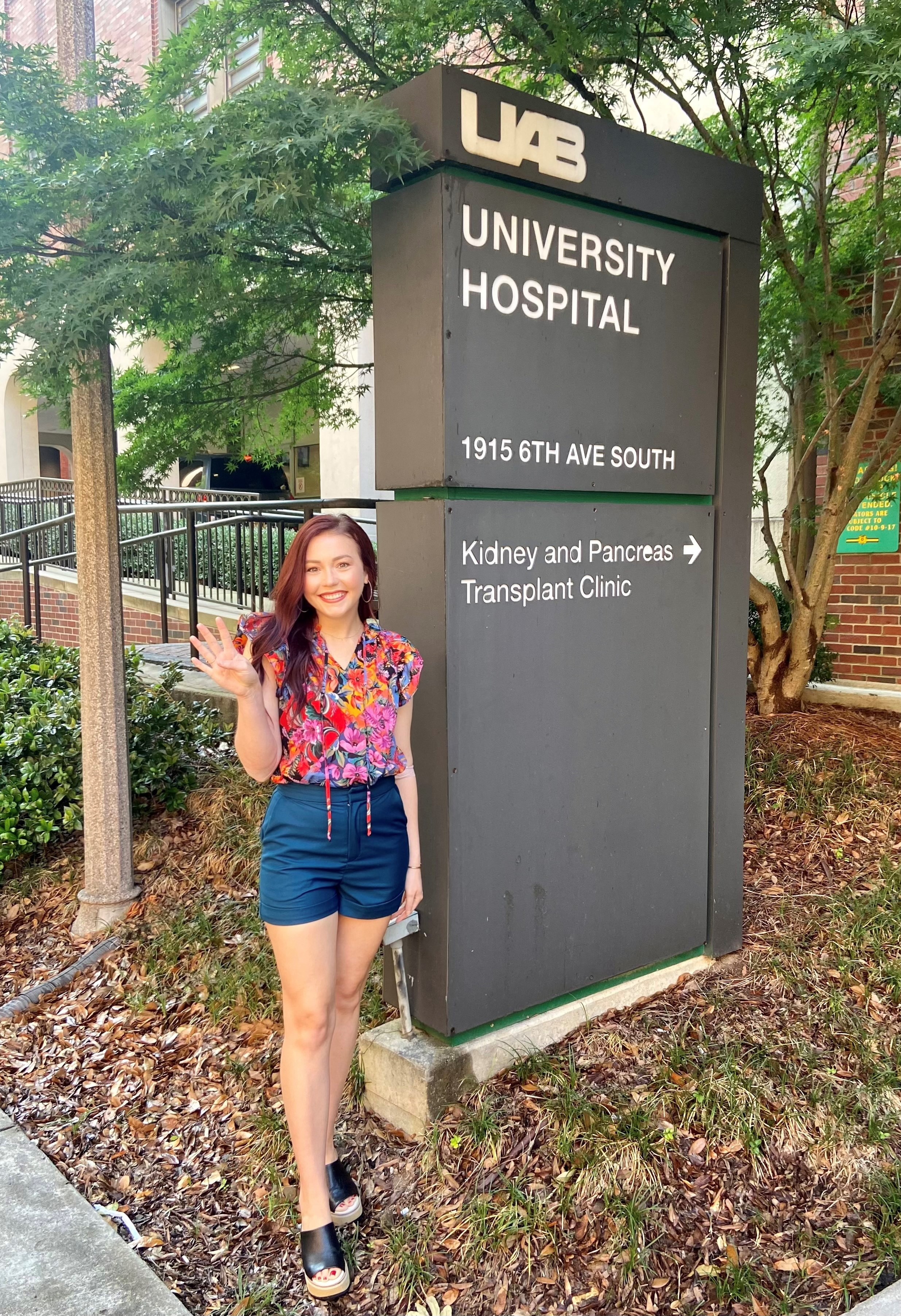
Ashley Nichols, 32, had learned to manage her type 1 diabetes. Diagnosed when she was 6 years old, diabetes was but a backdrop to Nichols’ life. She grew up in Fayette, Ala., got her nursing degree, married her husband, Blake, and went to work as a labor and delivery nurse in Tuscaloosa, Ala. When it came time to start her own family, Nichols sought and received approval from her medical team before getting pregnant.
Nichols was vigilant about her prenatal care. “I had all the tests to ensure I was healthy for pregnancy, including eye exams and blood tests to check diabetes control and kidney function,” she said. Despite her precautions, preeclampsia – a blood pressure condition that can affect both mother and baby – led to complete bedrest when Nichols was 24 weeks pregnant. “I was vomiting, had headaches, and eventually noticed decreased urine output,” she said.
Nichols’ kidney function rapidly declined, and she was hospitalized until delivering baby Grant prematurely at 31 weeks. Still, she had lingering high blood pressure.
Emotional rollercoaster
Two years later, Nichols was feeling more like herself. Her blood pressure medication had helped stabilize her condition, and she was exercising daily. “I was at a level of fitness and endurance that I thought I’d never reach again,” she recalled. “I was looking forward to seeing my lab results at my next doctor’s appointment.”
But those lab results showed that her kidney function had plummeted to the point where she met the criteria to be evaluated for a transplant. “I was devastated,” Nichols said. “For me, that was my absolute worst-case scenario.”
Her wait to meet with the UAB Comprehensive Transplant Institute (CTI) care team felt like an eternity, but her appointment transformed her perspective. “They were so positive, and they recommended that my best option was to get a kidney and a pancreas,” Nichols said. A successful double transplant would heal her acute kidney failure and her diabetes. “They were the light at the end of the tunnel,” she said. “After that appointment, I felt confident and at peace.”
A rare double transplant
Douglas Anderson, M.D., a surgeon with the UAB CTI, said it’s relatively rare to transplant both a pancreas and a kidney. “The busiest programs perform several hundred kidney transplants each year, but do only 30-40 combined transplants,” he said. “We perform fewer than a dozen pancreas transplants each year.”
There are so few pancreas recipients because relatively few patients can reap significant benefits from the surgery. “Although diabetes is common, a new pancreas won’t address insulin resistance or help those who need 90 or 100 units of insulin each day,” Dr. Anderson said. “Well-managed insulin therapy has fewer risks than potential complications from post-transplant immune suppression.”
People like Nichols are an exception. Patients with type 1 diabetes who are getting a kidney transplant are already going to be on immunosuppressant medications, and a new pancreas allows these patients to stop insulin therapy, so the benefits outweigh the risks. “Ms. Nichols’ pancreas didn’t make insulin, and her new pancreas restored insulin production,” Dr. Anderson said. “And because diabetes affects kidney function, a new pancreas meant that the transplanted kidney would do better in the long run.”
The clock starts
Nichols was evaluated as a transplant candidate in December 2021, completed her testing in January 2022, and received a letter saying she was on the active waitlist for both organs in February 2022. “At that point, it finally felt real,” she said.
Nichols was notified four times that a new kidney and pancreas might be available for her. “In June 2022, I was notified that I was a backup recipient,” she recalled. “I got another call in August 2022, but I had COVID-19 at the time and was unable to proceed. Then, on January 21, 2023, I had an 11-hour standby as a backup recipient.” At the end of January, Nichols received the call that would change her life. “It was another backup call, but this time it felt different,” she said. “Within 30 minutes I was called to UAB.”
Dr. Anderson said multiple calls to a potential kidney-pancreas recipient are common. “The pancreas is a challenging organ to work with, in that we don’t know if it’s usable until it’s recovered from the donor,” he said. “It can have edema, firmness, or fibrosis – things you can’t always tell ahead of time.” Because the pancreas is susceptible to forming blood clots following transplant, “we want an organ with the best vessels to have the greatest chance for success,” he said.
Today, Nichols counsels other recipients on the waitlist not to lose faith. “When it seems like you’re in a season of waiting, it’s important to remember that you’re in the hands of a team you trust,” she said. “You don’t want it to happen fast – you want the perfect organ match for you.”
Celebrating the gift
Nichols came home from UAB Hospital in February 2023, exactly one year to the day after being placed on the active donor list. “My life totally transformed in a year,” she said. Now, after 25 years of having diabetes, she no longer needs insulin therapy.
Nichols delights in watching four-year-old Grant grow, and she cherishes creating memories with him and Blake. But she knows that her life came at a cost for another. “We celebrate my donor’s life, celebrate each milestone in their memory, and keep their family in our daily prayers,” she said. “I honor my donor by waking up every day with a heart of gratitude for their selfless gift.”
